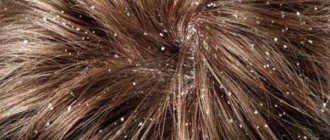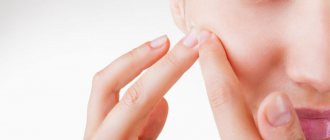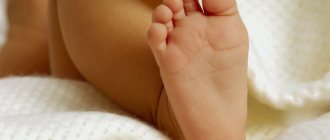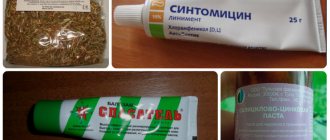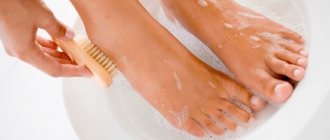Callus appears due to mechanical irritation on the skin.
In addition to discomfort, such formations cause unpleasant and painful sensations. When they first appear, effective treatment measures are used.
Callus patch for dry calluses
Callus between the toes - treatment, how to get rid of it
How to treat Chicken Jolka callus
Methods for treating callus on the toe
The site provides reference information. Adequate diagnosis and treatment of the disease is possible under the supervision of a conscientious doctor. Any medications have contraindications. Consultation with a specialist is required, as well as detailed study of the instructions! Here you can make an appointment with a doctor.
Soda bath
Treatment of calluses at home does not involve the use of pharmaceutical drugs, but baking soda is found in every home, so we will consider it as a folk remedy. Well, the healing process itself will look like this:
- Take a basin with a large bottom and high walls and pour three liters of water heated to a temperature of 40-45 degrees.
- Add 3-4 tablespoons of soda to the water and carefully dissolve it without leaving a residue.
- Lather your feet with antibacterial soap and soak them in water. And stay in this position until you feel the calluses begin to soften.
- Place your feet on a dry towel. Take a pumice stone in your hands and rub away the softened layers of calluses.
You can repeat the treatment of dry calluses using this method many times, until the hard growth is completely “erased” from the skin. Moreover, a hot bath, baking soda and soap will not harm even the thin skin of a teenager or child. Well, at the very end, you can nourish the steamed skin with baby cream.
Tomato compress
Tomato pulp also helps soften the skin and gradually remove calluses. Apply tomato pulp to the hardened area and wrap in film. You can apply a hot compress on top, or you can do without it. After an hour, wash off the tomato mask and rub your skin with a pumice stone.
Author: Ekaterina Solovyova
Please note that the information presented on the site is for informational and educational purposes only and is not intended for self-diagnosis and self-medication. The selection and prescription of medications, treatment methods, as well as monitoring their use can only be carried out by the attending physician. Be sure to consult a specialist.
Eggshell film
This option is suitable for treating wet calluses - blisters that appear on the skin after walking in new shoes. The treatment process itself is organized as follows:
- Carefully crack the egg. Peel off the thin film from the shell. You can use the white and yolk as you wish.
- Apply this film directly to the blister before bed or during the day when you can walk around the house without socks.
Practice shows that after such an application even a huge dropsy goes away. Moreover, treatment of calluses using this method is suitable even if there are open wounds on the skin.
Reasons for appearance
Dry calluses - a layer of keratinized skin with a yellowish color - are formed as a result of constant moderate friction. Negative effects are caused by:
- uncomfortable tight shoes,
- walking in high heels,
- excessive sweating,
- seams and rough joints on the inside of shoes,
- overweight,
- physical exercise,
- intense sports activities.
The provoking factor for the pathological process is poor blood circulation, lack of vitamins and lack of hygiene.
Sometimes the cause of roughening of the skin is diabetes mellitus, dermatological diseases, viral infection, or anatomical deformation of the foot.
Urine therapy
Old dry calluses can be cured without soda baths. To do this, you just need to overcome disgust and set aside 3-4 days for the procedure. Well, the treatment of calluses on the feet using urine therapy is performed according to the following scheme:
- We moisten a cotton pad with urine and apply it to the callus.
- We put on thick socks and go to bed.
- In the morning, take off your socks, peel off the disc and clean off the crust with a pumice stone.
Despite some skepticism in society, urine and pumice are quite effective folk remedies with which you can get rid of the most stubborn calluses.
Procedures
Doctors do not advise treating a dry formation with a rod on your own, so as not to introduce a fungal infectious disease. Remedies and folk recipes cannot always cope with the disease. Then the callus begins to hurt, become inflamed, and fester.
Specialists can effectively deal with this problem. They present hardware methods of combating dry calluses on the feet and toes.
Drilling out the callus formation is done with a frieze. Carefully, without injuring healthy tissue, the frieze destroys the growth and eliminates the rod. After a hardware pedicure, an antiviral ointment is applied to the wound.
The laser is able to cure the most neglected and chronic rod formations on the legs. It completely burns the root, destroying associated infectious bacteria. The likelihood of inflammation or new relapses is minimal.
Cryotherapy is the treatment of growths with nitrogen. This substance helps in thirty seconds the rapid exfoliation of rough, keratinized tissue.
Electrocoagulation destroys keratinized skin using electrical currents tuned to different frequencies.
If the dry callus is large in size and damages neighboring tissues, then the specialist will prescribe surgical excision.
Cosmetological, professional procedures used to eliminate dry calluses are quite effective. They allow you to solve the problem presented in just one session.
Bread crumb
Treatment with folk remedies is not always associated with such extreme “drugs” as urine. If you cannot overcome natural disgust, pay attention to the bread crumb and the following treatment technique:
- Mash a piece of bread in your hands and drop 3-4 drops of vinegar essence onto the crumb.
- Place bread soaked in vinegar on the callus and secure it with a band-aid.
- Wait until the skin begins to sting from the acid, remove the crumb and wipe off the callus layer with a pumice stone or file.
- Repeat this procedure until the keratinized area is completely destroyed, reducing the concentration of vinegar at the final stage.
In advanced cases, treatment of calluses on the feet using this method takes 6-8 days. Well, fresh corns are treated in 2-3 days. But you should not apply crumb in vinegar to dropsy - this will only harm your skin.
Salipod callus patch
This is a simple do-it-yourself tool. The patch differs in that it is impregnated with antiseptic agents and sulfur; this mixture helps exfoliate it. Oils are used to soften the skin.
Apply the patch only to the damaged area. The duration of this procedure ranges from 2 to 14 days, depending on the depth of the lesion.
A small piece of plaster is applied to the steamed affected area, after removing the protective film from it. It is secured on top with a regular plaster or bandage.
This method should not be used by women during pregnancy or by persons undergoing treatment for diabetes or cancer.
Money Tree
We don’t know whether the fat woman helps in solving financial issues, but she is 100% effective in treating calluses.
To heal wet and dry problem areas, you just need to do the following:
- Pluck a leaf from the money tree and spread it lengthwise, exposing the dense core.
- Apply a leaf of the crassula to the problem area and secure it with a band-aid.
- After an hour and a half, remove the patch and leaf.
Repeat this procedure several times during the day, and after 4-5 days the callus will come off the foot.
Ointments and their differences
There are many ointments that can soften and completely remove calluses:
- Ointment “Super antimozolin”. It is used to get rid of corns that have roots. The preparation contains lactic acid, which has a softening effect. This product acts quickly, returning the skin to a healthy appearance, completely eliminating the problem. Its analogues are “Vitaon”, “Frizonel”.
- Bensalitin ointment. This is a powerful anti-callus agent. It is used for fresh corns and for those with a core. This remedy is characterized by anti-inflammatory, keratolytic, antimicrobial effect.
- Salicylic ointment. Effectively softens the rough layer of skin and destroys pathogens. Has a powerful keratolytic effect. The callus goes away quickly.
- Levomycetin ointment. This product is characterized by a strong antimicrobial effect, which helps to avoid infection of the wound.
- Vishnevsky ointment. The unique composition of the drug allows you to quickly get rid of wet and dry calluses. The ointment has an antimicrobial and strong softening effect.
Doctor: Olga Shishkina ✓ Article checked by doctor
Potassium permanganate solution
This remedy does not treat the keratinized area of the skin, but relieves any painful sensations associated with dropsy. Therefore, any real treatment begins with potassium permanganate. Well, the healing process itself looks like this:
- We dilute potassium permanganate in two liters of water, obtaining a pale pink tint.
- Add a third of a spoonful of salt to the solution and immerse the foot with dropsy in it.
- Keep the foot in the water until the pain is completely relieved.
After that, you can deal with dropsy for real using one of our TOP 10 recipes.
Salicylic acid
This option is suitable for treating dry calluses. Moreover, it can be considered as a competitor to urine therapy. Well, the recipe for healing itself looks like this:
- Soak cotton wool in salicylic acid and apply to calluses.
- We put on our socks and go to bed.
- In the morning, we clean off the softened area of keratinized tissue and lubricate the feet with baby cream.
This option has only one drawback - salicylic acid can burn not only the callus, but also the skin around it. Therefore, caustic acid must be handled extremely carefully, and the method itself is not included in the top five folk remedies.
Let's get rid of it forever
Traditional methods of treatment and drug therapy do not always effectively cope with dry calluses. Sometimes a new localization of the growth is observed, especially with a fungal infection.
Laser therapy can permanently remove dry callus; it is the most reliable, safe method of control. The procedure does not allow for the possibility of injury or pain in the damaged areas.
The laser beam destroys the compaction, the root, and all infectious bacteria. Inflammatory processes are almost not observed, the recovery period is painless and quick.
The advantages of laser therapy include:
- Painless procedure under local anesthesia.
- The keratinization will disappear after one visit to a medical facility.
- The rehabilitation period does not require wearing bandages or using medications.
- The procedure is carried out quickly.
Laser treatment should not be used for people suffering from:
- Oncological diseases;
- Weak immunity;
- Diabetes;
- Pregnant and lactating women;
- For herpes on diseased areas of the skin.
Tomatoes
Tomatoes contain a whole range of organic acids, and in very gentle concentrations. Therefore, tomato pulp can be used instead of salicylic acid or vinegar, proceeding according to the following scheme:
- Chop one or two tomatoes and place this mass in a water bath.
- When the tomatoes have broken down into a paste, spread the thick mixture onto the problem areas and bandage your feet.
- We leave the feet bandaged overnight, and in the morning we thoroughly wash them, rub them with pumice stones and lubricate them with nourishing cream.
Organic treatment of calluses will last longer than the “acid” one, but tomato paste will not cause any harm to the skin.
Other methods of home therapy
- Old calluses can be easily removed by applying propolis. A pea-sized ball should be heated and the problem area should be sealed with it. Place a patch on top and leave for 3 days. Remove, steam the feet and treat with pumice.
- You can treat calluses with apple cider vinegar. You need to soak the crumb of white bread in the product and apply it to the formation. Don't take it off all night. To eliminate the growths, you will need to carry out the procedure for a week.
- A simple method of therapy is sunflower oil. It needs to be slightly warmed up, soaked in gauze and wrapped around the foot. Insulate with polyethylene and put on socks. Do not remove for 6-8 hours.
- Figs soften and restore the skin . You need to take one ripe fruit and mash it. Add a teaspoon of natural honey and a tablespoon of apple cider vinegar to it. Spread the mixture in a thick layer and leave overnight.
If the callus cannot be eliminated for a long time or its presence causes discomfort, you should consult a dermatologist. Dry callus can easily be confused with a plantar wart, a dangerous disease that requires treatment with Groprinosin and other antiviral drugs.
Egg in vinegar
This is a very popular and effective folk remedy for calluses. To prepare it, we need a raw chicken egg (preferably homemade) and a glass of highly concentrated vinegar. Well, the treatment method itself looks like this:
- The egg is immersed in vinegar and left in it until completely dissolved.
- The resulting mass is applied to the keratinized area and wait about an hour (or until a strong tingling sensation occurs).
- Next, the callus is rubbed with pumice stone, removing soft tissue, and the procedure is repeated until complete healing.
This recipe requires some time to prepare the remedy, but pays off with high efficiency. Young calluses go away in 3-4 sessions, and old calluses go away in 5-6 applications of the folk remedy.
Precautionary measures
Various herbs and plants can cause allergic reactions in people with hypersensitivity. To avoid negative consequences, a small amount of the product should be applied to the elbow and check the reaction after 15 minutes.
Celandine should be used with extreme caution - healthy tissue should not be touched; the procedure should be carried out with gloves, since the grass is poisonous.
Each person has a different epidermis density, any folk remedy should be kept until the first unpleasant sensations appear - tingling, burning.

